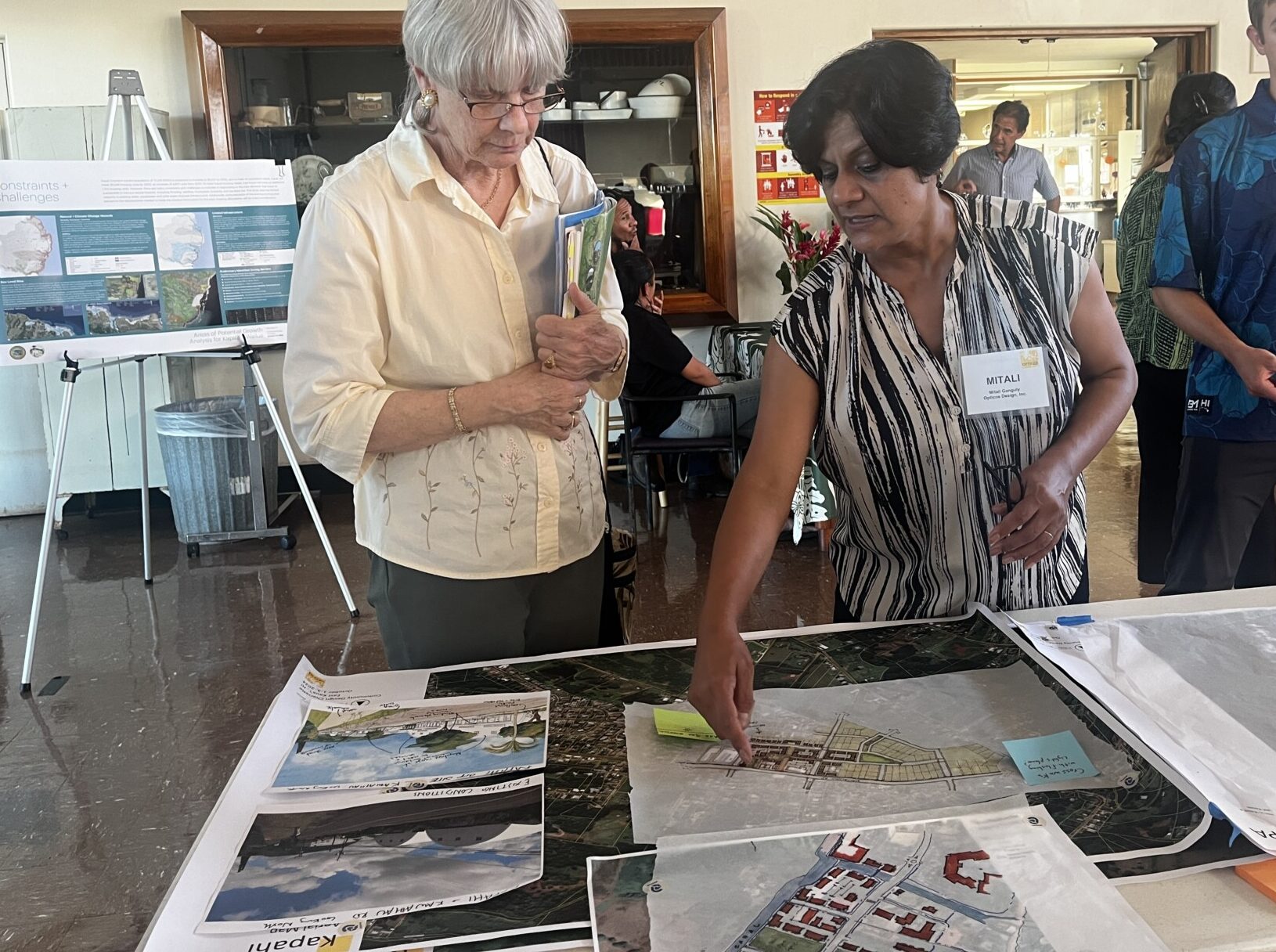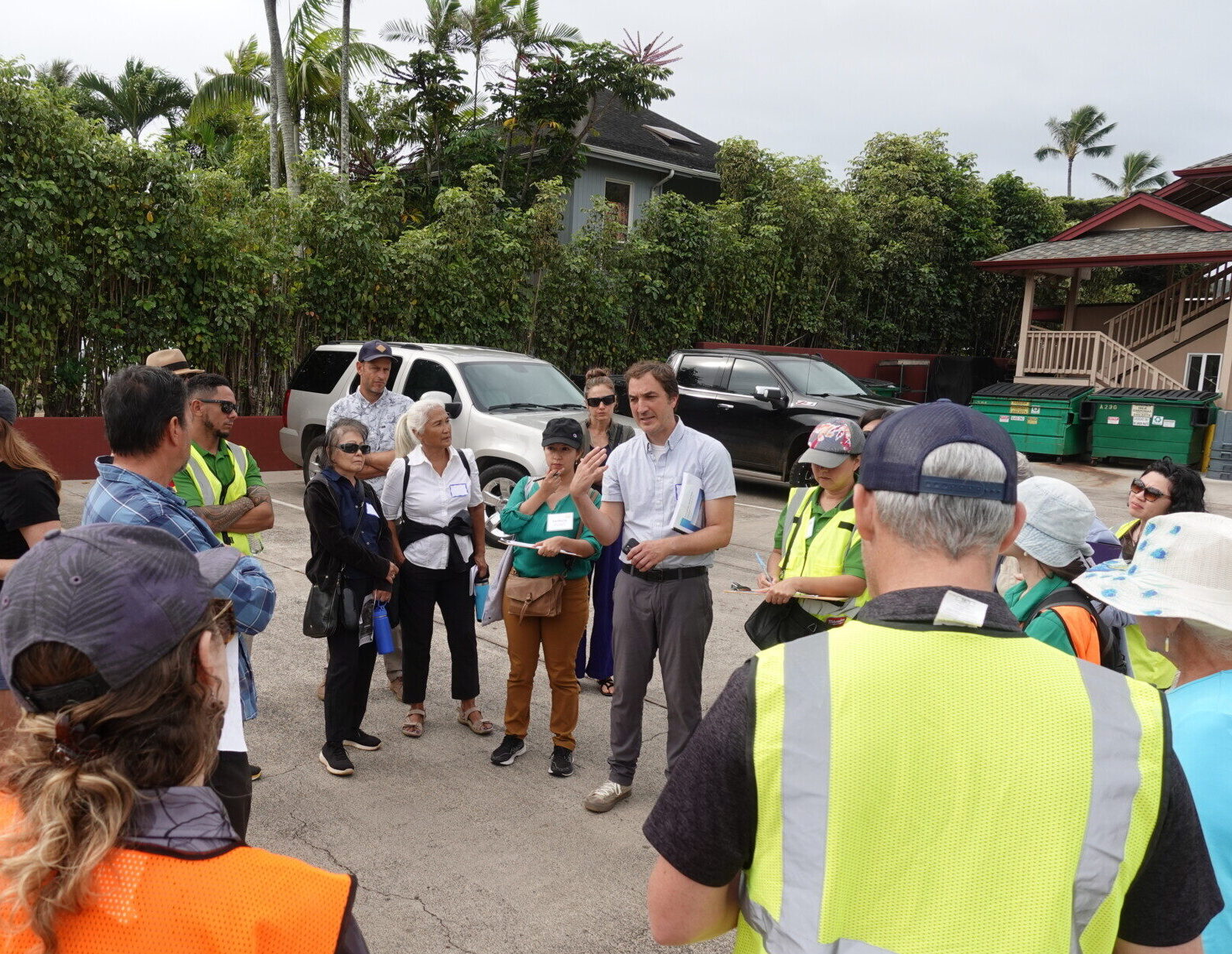Opticos has been in regular attendance at the Hawaiʻi Congress of Planning Officials Conference (HCPO) over the years and always looks forward to the annual gathering of APA Hawaiʻi Chapter members to catch up and share stories with existing and past clients from across the islands. The 2024 conference on the Big Island, which wrapped up on September 13, was also a chance to better understand the current issues impacting Hawaiʻi communities and share lessons learned on recent projects on the islands.
Caroline has been working closely with Kaua’i County Planning to bring much-needed housing to underutilized parcels in and around the Kaua’i Civic Center in Līhuʻe, while Mitali has been working with Maui County and the Hawai’i Community Foundation to develop a County-wide Missing Middle Housing Plan and Strategy.
The panel provided an opportunity to share lessons learned from recent projects. Key topics discussed during the panel include:
- Middle-income housing remains the most challenging AMI bracket for the market to address; both Maui County and Kauaʻi County are exploring how they can enable Missing Middle Housing to address this gap.
- Community engagement on Maui has shown an increased openness to housing types other than detached single-unit homes and a growing interest in smaller units and Missing Middle Housing.
- Kaua’i County has been at the forefront of pro-housing zoning reform for over a decade, and Opticos has been honored to support them in various zoning reform efforts.
- Hawaiʻi is joining the growing number of states developing state-level pro-housing legislation.
Hawai’i has the most expensive housing market in the country and faces unique challenges in housing production, such as infrastructure constraints resulting in minimal water and wastewater capacity. Promising tools to address this constraint include:
- Public-private partnerships to provide infrastructure, like the RAISE grant in Maui County
- District-scale infrastructure for large infill opportunities or strategic greenfield development, like the EcoDistrict studied for the Līhuʻe Civic Center Redevelopment Feasibility Plan, completed by Opticos shortly before the conference.
The need to import building materials to Hawaiʻi also serves as a barrier to construction that negatively impacts housing affordability on the islands. One promising tool discussed during the panel is reforming zoning codes to enable small-scale multifamily housing—like Missing Middle Housing—that can be built more resource-efficiently and provide market-rate attainable housing thanks to affordable-by-design smaller units and construction efficiencies.


Less than a month after returning from HCPO on the Big Island, Mitali went to Kauaʻi along with other Opticos urban designers to work with Kauaʻi County, SSFM International, and East Kauaʻi community members on the East Kauaʻi Community & Circulation Plan. Opticos team members facilitated a series of Community Design Workshops, where the community worked with a multi-disciplinary design team to craft a vision for future growth and change in Kapaʻa and Wailua. Mitali and her team will also return to Maui for another workshop, marking another step in our continued collaboration on the islands.